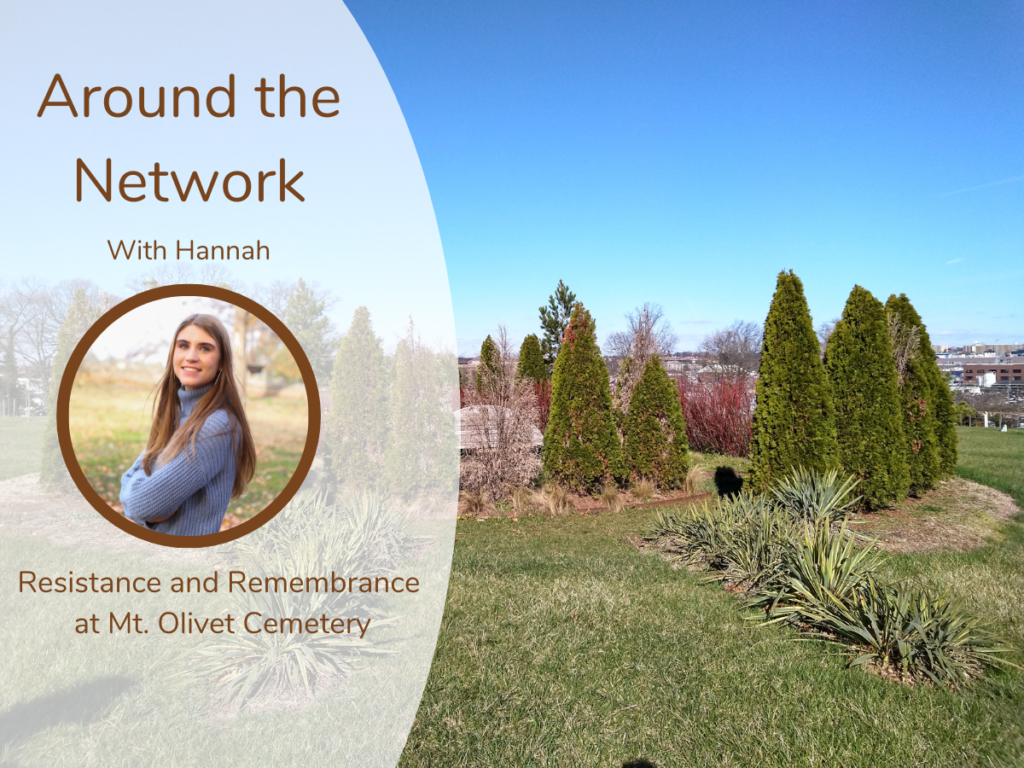Catholic cemeteries are sacred burial grounds for those who have left the earth, but they also serve as powerful places for the living. Mount Olivet Cemetery’s green space is no exception, and is a welcome center of reflection, comfort and tranquility.
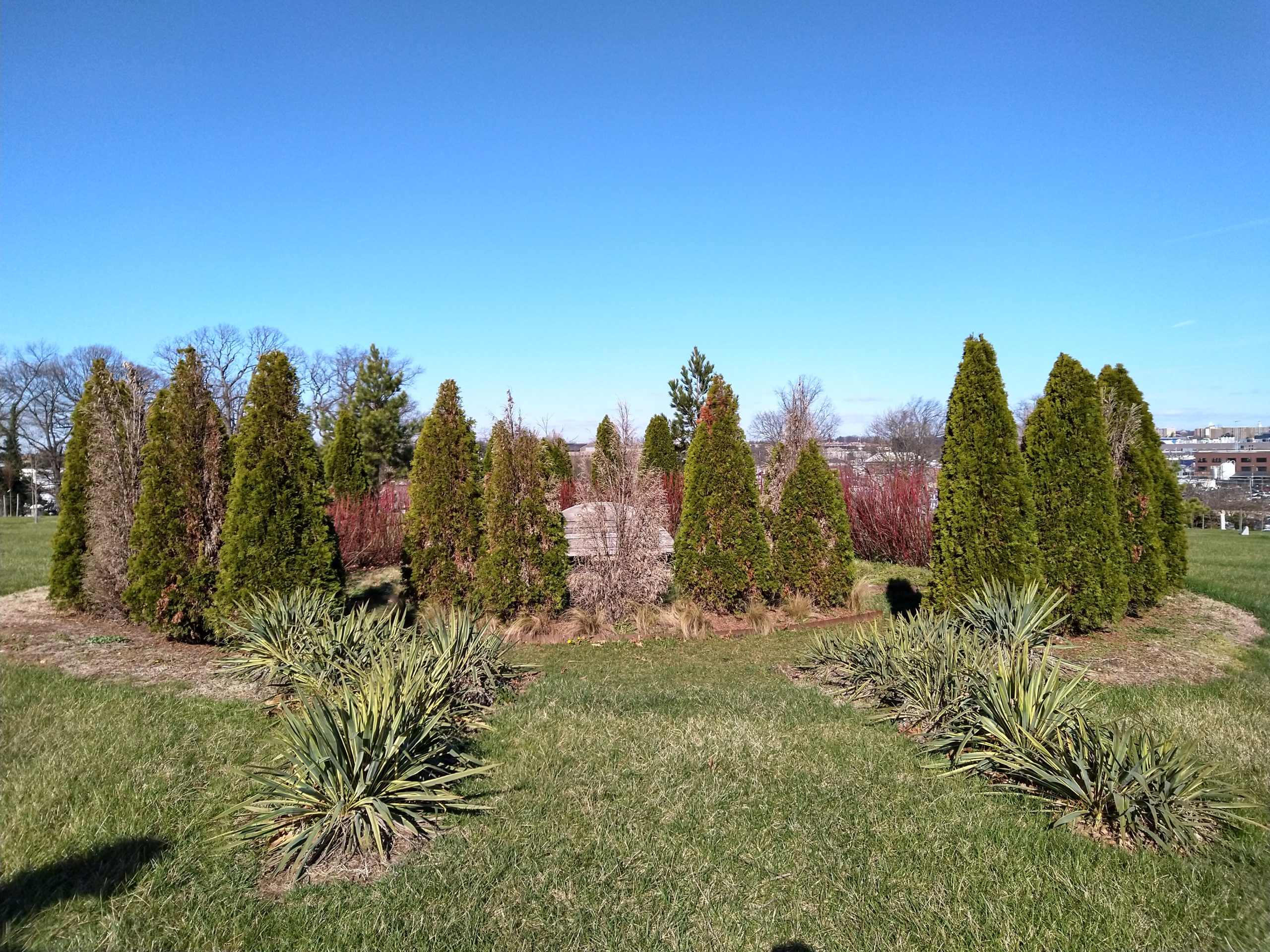
The Sacred Place at Mt. Olivet is carefully nestled atop an historic hill, overlooking Capitol Hill and a gorgeous view of the city. Behind a curtain of pines, shrubs and other plantings with a focus on storm-water mediation (recently expanded with the support of an Enhancement Grant), this memorial garden, like many in the Network, is a place of respite and peaceful contemplation.
When I had the chance to visit, Firesoul Cheryl Tyiska shared about the cemetery’s notable and deep history. Community members and visitors to Mt. Olivet Cemetery may be visiting a known loved one, but this cemetery’s roots run deep — back to a time when Washington D.C. was a mere fraction of the bustling metropolis that it is today.
Founded in 1858, Mt Olivet hosts the grave sites of many notable historical figures. From congressmen to artists and musicians, diplomats, civil war generals, spies and more. With culturally designated group sections for Roma, Scottish and Irish communities, this cemetery represents the historical makeup of the city and founding of our country.
But not all histories are told equally.
At Nature Sacred, we strive to ensure that Sacred Places represent and serve ALL people. That’s what makes this memorial Sacred Place so meaningful.
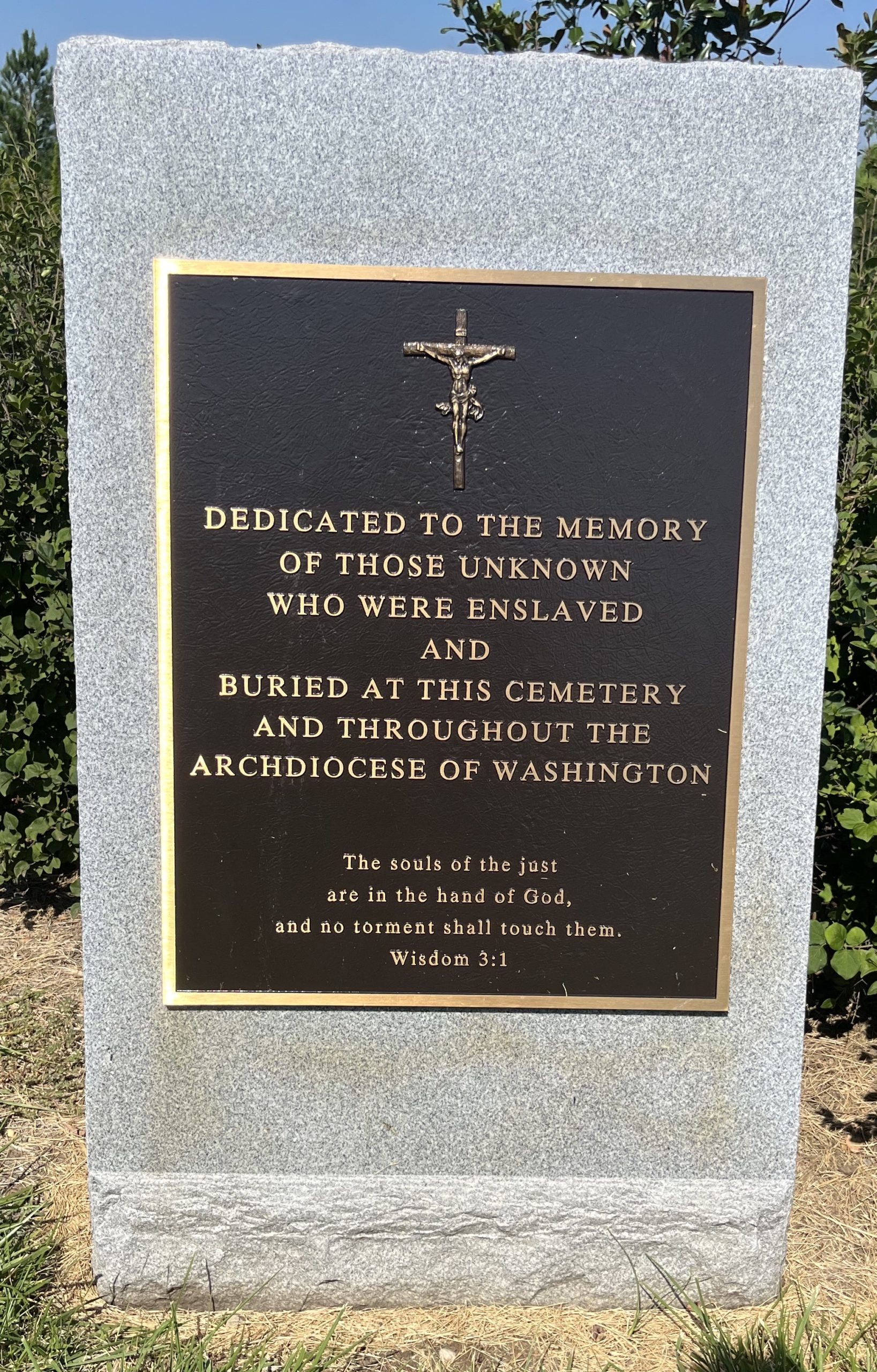
Mt. Olivet was one of the first racially integrated cemeteries in the city, it was founded ten years prior to the passing of the emancipation proclamation and on-paper abolition of slavery. This position in history means that both free and enslaved Black people were buried there. In fact, it is estimated that by the year 1860, over 10% of all slave burials were happening at Mt. Olivet — often in mass, unmarked graves.
This harsh reality, while painful to grasp, only amplifies the impact that contemplative nature space in the form of a Sacred Place here has. The Memorial Garden at Mt. Olivet is located on what is believed to be one such mass grave site of enslaved peoples. The Sacred Place is intentionally designed and placed to honor those who are resting there — while overlooking the Capitol Hill monuments that many of them helped to build.
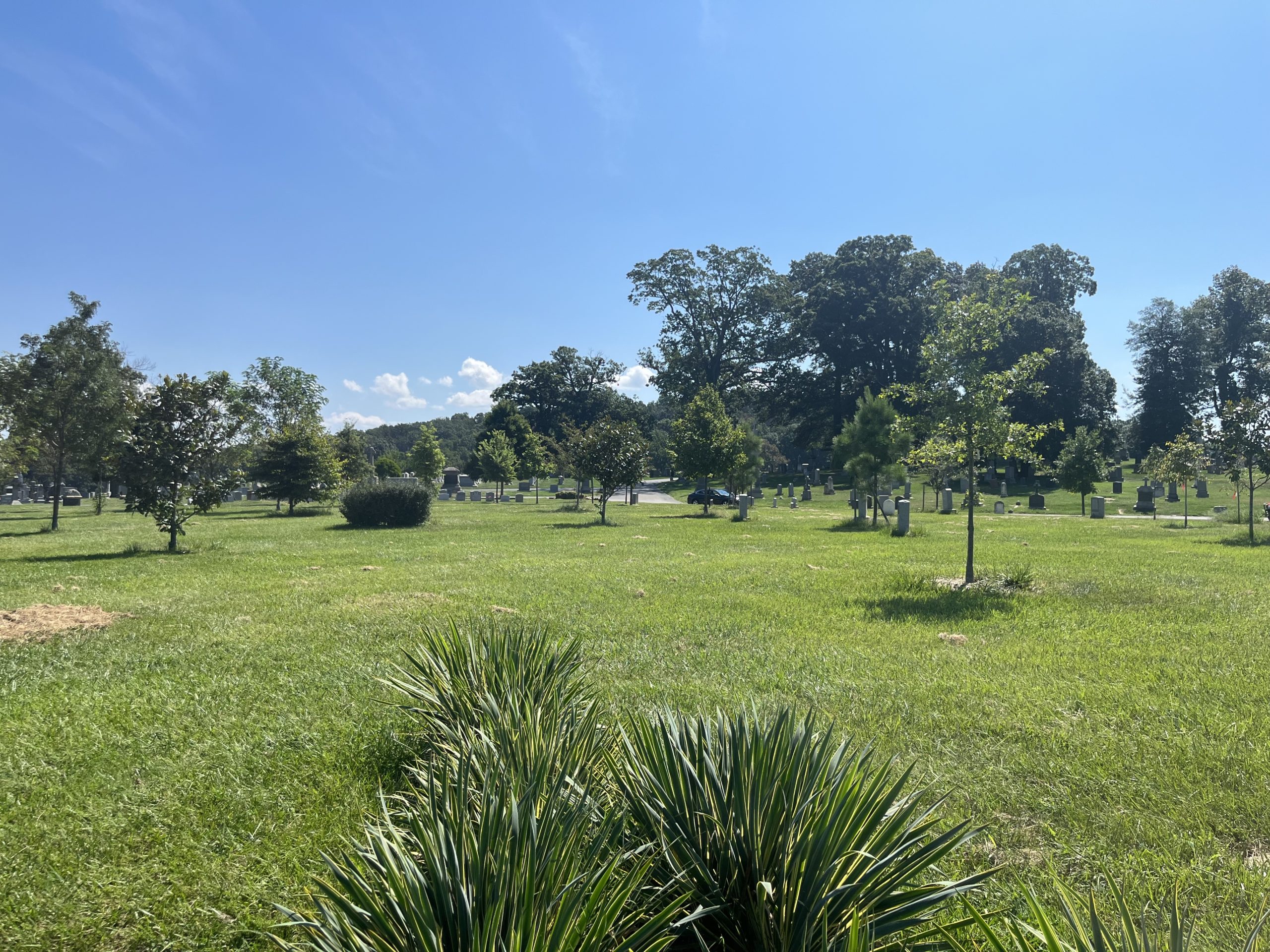
We often discuss the four design elements of a Sacred Place — Portal, Pathway, Destination, Sense of Surround. This Sacred Place design incorporates the history and culture of those who it is intended to memorialize and serve in a truly beautiful way. At this site, the ‘Portal’ design element, meant to signify that you have entered a new space, is marked by rows of large yucca plants on either side of the pathway. Yucca is a plant that is native to West Africa and was brought to the East Coast by way of the Atlantic Slave Trade. Yucca was historically used as a way for enslaved people to mark the resting place of a loved one without requiring or revealing to slave owners that they had literacy skills, which was illegal at the time. Yucca plants were most likely chosen as they are extremely difficult to kill; each and every root spore must be removed or the plant will grow back. This act of resistance — a culturally significant homage —is powerfully reflected in the portal element of this Sacred Place.
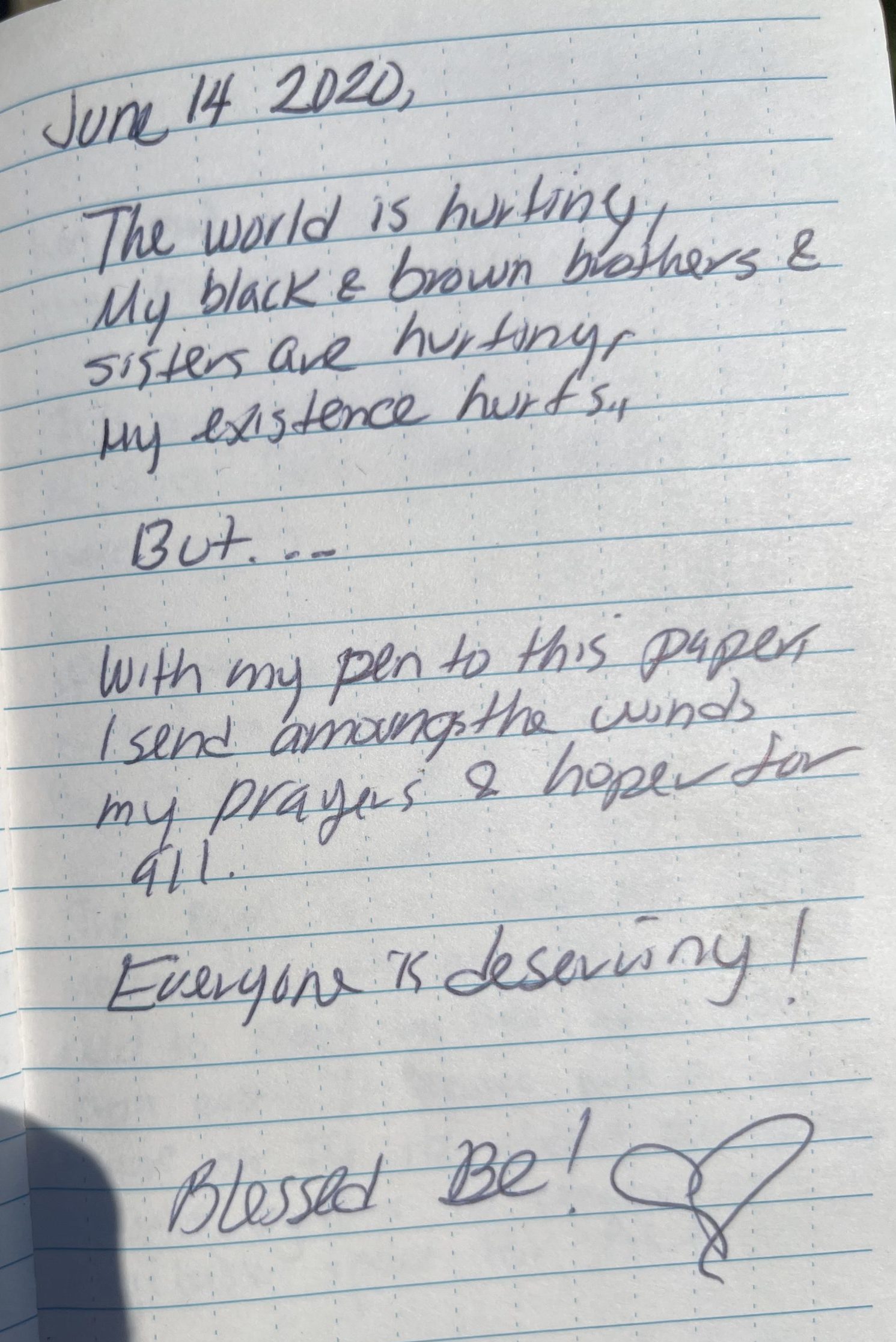
Today, Cheryl and The Catholic Archdiocese of Washington, D.C. are working hard to support the descendants of these enslaved peoples as they trace their family linages and reclaim their ancestors’ names. Resources are available for people who believe their ancestor may be buried in an unmarked grave at the cemetery.
While Mt. Olivet is a Catholic Archdiocese of Washington D.C cemetery, people from many backgrounds and cultures are buried there, and community members and visitors of all sorts visit Mt. Olivet for the reflective and historical nature of the place — a place whose history encourages us to ask tough questions and wrestle with uncomfortable answers, supported by the healing and grounding power of nature that surrounds us.
The diverse nature of Sacred Places — regionally, religiously, culturally, historically — is what makes the Network so unique. We look forward to seeing Firesouls like Cheryl at our next Interfaith Affinity Group Meeting on September 20th where folks from all sorts of backgrounds can come together, build relationships and deepen engagement with nature and their communities.
